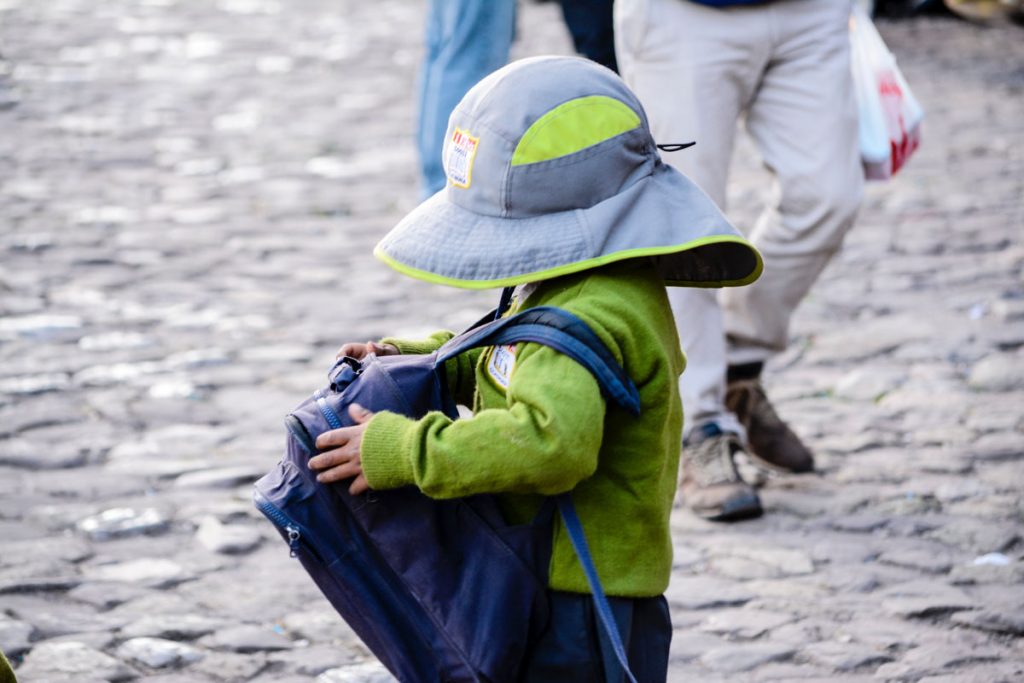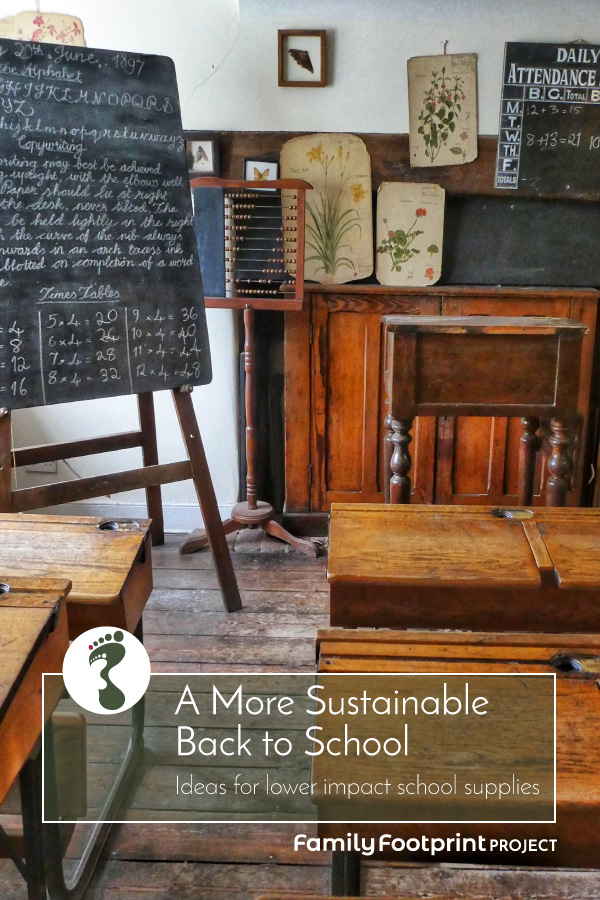Too soon to be talking about back to school? Maybe. At the time of writing this, school has not yet officially finished for the year. We’re all still looking forward to the long summer break, free from the early morning rush for the bus, assignments & homework, the after school run around and, most of all (for me at least!), making lunches every day!
However, throughout the long summer holiday we will also be preparing for the new year at school so it is time for me to write about more sustainable ways to approach back to school needs. Sorry! Feel free to pop this post into your ‘back pocket’ until Christmas is over and you are ready to face it!
Ok, if you are still with me, let’s get into it…
Earlier this month I wrote a post about Lower Waste School Stationery, but stationery isn’t the only area in which we can reduce the back to school footprint. Here are some more ideas, putting the waste reducing principles of REFUSE, REDUCE, REUSE, ROT & RECYCLE into practice.
School clothes
School clothing needs will vary depending on whether your child wears a uniform to school or ‘civvies’ (plain clothes). There are also many shades of grey (and maroon, navy, bottle green!) in between. Some schools have a very strict uniform code. At others the uniform is more of a ‘colour code’. And at others anything goes.
When my children were small and at preschool, which did not have a uniform, they had a set of clothes that were essentially their uniform – specific t-shirts and pants that were designated for school wear. It worked well but I recognise that this might be harder to get away with for older children! My daughter, now entering her final year of school, does not wear a uniform to school and wears her ‘normal’ clothes. She would, understandably, be horrified if I forced a ‘uniform’ onto her. In this case, our conversation around clothing covers those broader topics such as eschewing fast fashion (REFUSE), researching ethical brands and buying quality items to last.
Whatever your school clothing needs, however, look for good quality secondhand items (REUSE) either through the school’s clothing pool or local networks such as friends and your Buy Nothing group. If you have more than one child, hand-me-downs are your best friend!
You can REDUCE your overall needs by obtaining items that are a bit larger than your child needs right now and, hopefully, making things last for two or more years instead of one. Also buy good quality items that are designed to last and withstand the rigours of the playground.
If you have some latitude in what your child wears, look for 100% natural fibres, such as cotton which can not only be composted at the end of their life (ROT), do not shed microplastics into our waterways with each wash.
If you do need to buy new, endeavour to buy clothes from companies that have more ethical practices such as those identified on Oxfam’s 2019 ‘nice’ list.
And when school clothes have really had their day, when they are beyond even being handed down for another child to wear, think about other ways to reuse the fabric such as to make cleaning cloths. Stores such as H&M & Zara also RECYCLE textiles from any brand.

School bags
As far as school bags go, durability is the key word. Our primary school had a bag for sale through the uniform store that was very good quality. They did last and last so that each child used their bag almost to the end of primary school. Look for tough fabrics and heavy duty straps and fastenings that are going to withstand the punishment they will be put through.
Some brands have a lifetime guarantee, particularly for things like zippers and buckles. They are, of course, more expensive brands such as Crumpler, but worth considering if the bag will have a longer useful life.
In my experience, there are three points of weakness for school bags – the zippers, straps coming loose and the base wearing out. Goodness knows my boys must drag their school bags behind themselves everyday! I thought they were backpacks, but what do I know?!
Straps pulling out from the seams and zippers coming apart may be prevented by encouraging your child to carry less in their school bag but if bags do break, look at ways to repair them before replacing them.

School lunches
It is great to see the ‘nude lunch’ becoming more commonplace but single use plastics still abound in lunch boxes. Convenience is often the number one consideration in the pre-school rush. I completely get that. I would argue, however, that decanting portions of foods into lunch containers takes little more time than throwing in the pre-packaged option. Look for lunch box foods in bulk and, if time is really short on school mornings, fill a week’s worth of containers so they are ready to grab and go Monday to Friday.
I try to bake an easy slice or some cookies on the weekend to have on hand for filling lunch boxes. It doesn’t take long. I can usually do it while I am already in the kitchen preparing dinner. And, now the kids are older, they are often able to do this themselves. If there is one household job I can get them to help with, it is baking! As a general rule, fresh and homemade foods tend to be lower waste.
In terms of packaging options, try to move away from plastic containers. The ‘nude food’ movement saw an explosion in the variety and number of little plastic containers available for packing lunches. These are a step forward from single use plastic but they are still destined for landfill at the end of their life. As ever, use what you have but look for stainless steel containers if you need to buy new. Many have a plastic lid (better) but there are completely plastic-free options available (best) like these from Biome. There are also fabulous reusable fabric options (watch out for plastic laminated fabric though) and, of course, wax wraps.
The same applies to drink bottles, if you have BPA free plastic bottles, use them but invest in stainless steel drink bottles when buying new.
If lunch items require cutlery, such as yoghurt, obtain secondhand cutlery just for this purpose. I find that teaspoons often don’t come home and if I have sent one of our table cutlery set, I get cross! If they are from the junk shop (the uglier the better!) it doesn’t matter so much.
One further point, if your child’s school doesn’t have a composting system, encourage them to bring their scraps home (sealed up in their lunch box!) to be thrown into your household compost or worm farm.
Final tips
Label everything. If something has a name on it, it has a much higher chance of coming home again – at some point. We had a school hat sit on the school oval for the entire summer holidays but it was returned to us in the new school year because it was labelled.
Be that mum who is always digging around the lost property at school. My kids hated it! They would head the opposite way if I went into school with them to search the lost property. But I often found our lost items. It was worth embarrassing my kids for that! I have drawn the line at going in to their high school to rummage through the lost property box though. Even I have limits!
Do you have any more tips for a more sustainable back to school? I’d love for you to share them in the comments below so that we can build a great resource together.
[mc4wp_form id=”96″]


